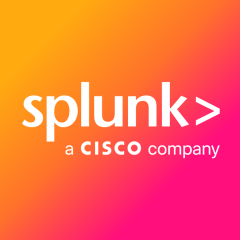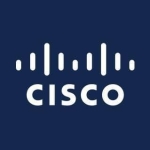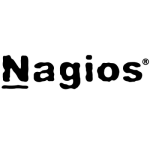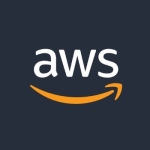What is our primary use case?
Our primary use case for SignalFx was visualization, charting, and alerting. We also used it to fix our µAPM.
How has it helped my organization?
For one project I was working on, at least 15,000 people were using SignalFx. They used to monitor their application health in the SignalFx dashboard and get alerts from SignalFx. The users had different job profiles, such as engineers and architects.
What is most valuable?
One of the valuable features is that it is very user-friendly. We can directly search for a metric and create alert charts straightaway. There are multiple visualization options to create charts that allow users to create detectors and alerts and integrate them with downstream applications for getting notifications.
Moreover, the volume it handles is very good, including the number of metrics, the volume number of traces, and more.
What needs improvement?
There are some predefined metrics where we can directly install the SignalFx agent. It gives some informative CPU utilization where some things are inbuilt. But for specific applications, we may need to create customized metrics. Here, developer teams have an additional burden of creating the whole thing if they need to customize anything. The additional feature metric could be a custom metric edition. It would make it simple for any user or engineer to go beyond the default metrics and easily choose to add more metrics. It will help share dashboards, so when we have a single version, thousands of people can use the same single version of the dashboard.
The sharing option and custom metric would be the two additional features I would like to see in the improved version.
For how long have I used the solution?
I used SignalFx for six to eight months for my previous project, and the version I used was Splunk Observability. I used it last in October 2022; I am not using it right now.
What do I think about the stability of the solution?
It is a stable product. There used to be some unplanned maintenance or intermittent issues. Most of the time, we used to get alerts or notifications from the SignalFx team. So, out of 100, I would give it a 90. It was stable, but in that 10% of the occurrence, we faced various problems like loading traces, dashboards, and more. In that project, we had a limit of detectors and a limit of a metric time series, and several subscribed metrics. So, we used to get some notifications when it reached 80% or 90% of the usage. Thus, it is completely related to the subscription. But we faced the fact that the number of MTS reached the limit.
In terms of stability, we faced intermittent issues so I won't give it a 100%; it is 90%.
What do I think about the scalability of the solution?
It is scalable. Although the scalability depends on the subscription model, there are some related requests according to cost. For example, if I want to increase the metrics by up to 30%, store more metrics, or create more alerts, I can easily do it without impacting anything. For all those things, it is scalable.
How are customer service and support?
I used to create a support case in the SignalFx portal itself, and I used to call them on their toll-free number and engage them with issues. So I had some experience with their team and I rate them an eight out of ten.
I would rate it an eight because customer support won't provide back-to-back service. If I expect updates every hour, sometimes I may not get updates every hour. For example, if I need someone to explain the issue, there might be delays. If I need to get some root cause of an issue in real-time, that might take time. So considering these factoes, I rate them an eight out of ten.
How would you rate customer service and support?
Which solution did I use previously and why did I switch?
I have used some observability tools like Splunk, Instana, and Grafana. I found SignalFx the best one for visualization, and it is user-friendly too. For example, you can directly search for a metric, and we can create alert charts immediately. So there will be multiple visualization options to create graphs. From there, we can directly create detectors, create alerts, and integrate them with other downstream applications for getting notifications.
How was the initial setup?
The initial setup was simple, and we used some package installers. We had a restrictive code for binaries in Artifactory. So we directly used some package installers and pulled it in individual service. Also, it was integrated with Puppet, so installing the SignalFx agent and starting it was simple.
What about the implementation team?
I wanted to manually install, deploy, and download it on a single server, and the whole manual procedure took around 10 to 15 minutes. When I tested a group of services with the help of Puppet, even hundreds of servers were done within an hour or something.
So I was working on a banking project, and we had a private cloud there; SignalFx agents were installed on servers, and our metrics were derived from there.
Which other solutions did I evaluate?
My company used an inbuilt application built by in-house developers, which was developed 15 years ago. Those tools were somewhat outdated and could not serve the purpose of the ever-growing volumes and other issues. So they preferred to have some third-party tool to solve their problems, and they found SignalFx useful. As a user, I also thought SignalFx was much better than other visualizations.
What other advice do I have?
I would definitely recommend SignalFx. Compared to other installation tools, creating alerts, understanding charts, and creating dashboards is more straightforward.
The functions are complex but SingalFx is very user-friendly. There is very defined documentation for everything, whether I have to create an alert or use some aggregation. We will have a direct link that says something like, "Click here to read more" or "Click here to understand." Such links are there for everything. Moreover, if I want to create an alert, there will be multiple options; it will say, "What is the time of alert?" or "What is the threshold base?" All these details will be there; you will have a link to detailed documentation. It is a very user-friendly tool for any beginner.
I would rate it as nine out of ten.
Which deployment model are you using for this solution?
On-premises
Disclosure: My company does not have a business relationship with this vendor other than being a customer.




















